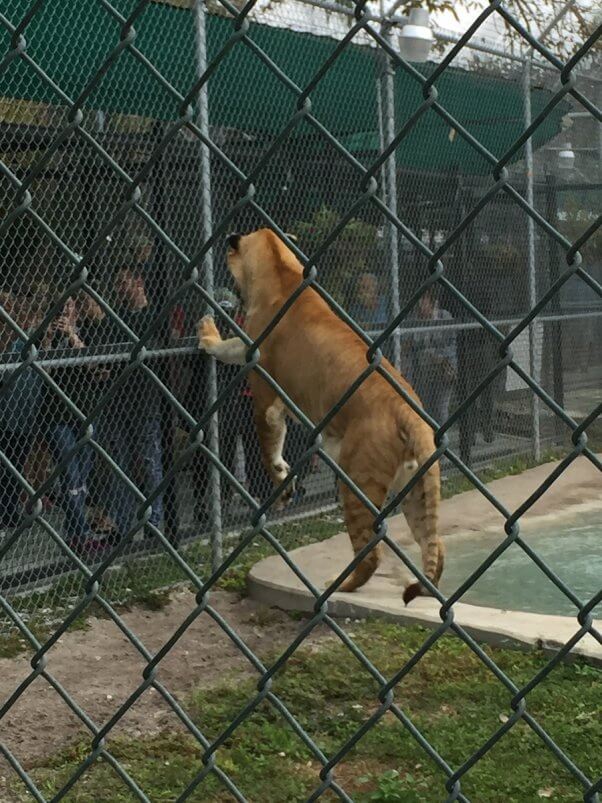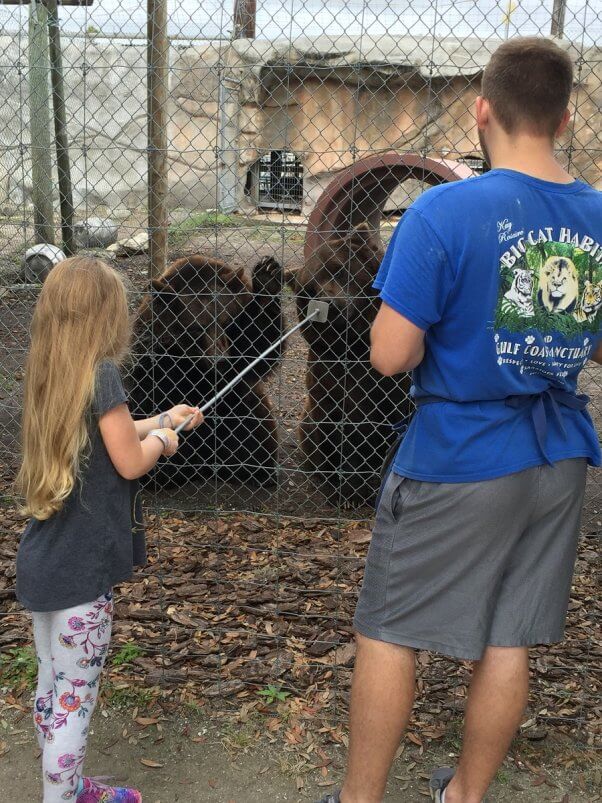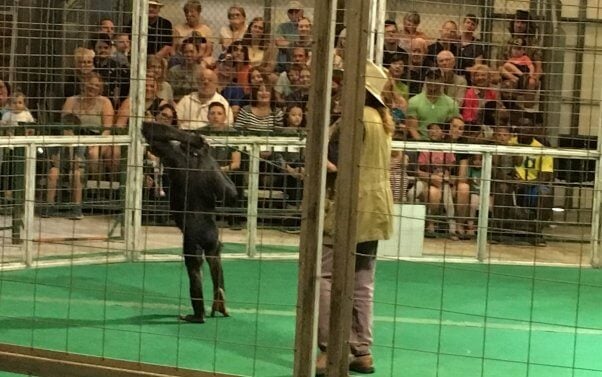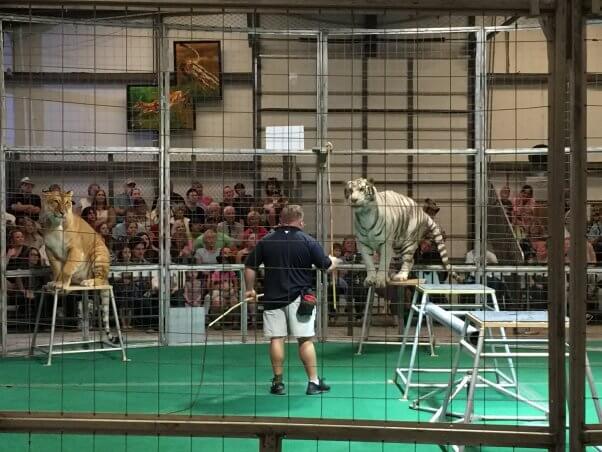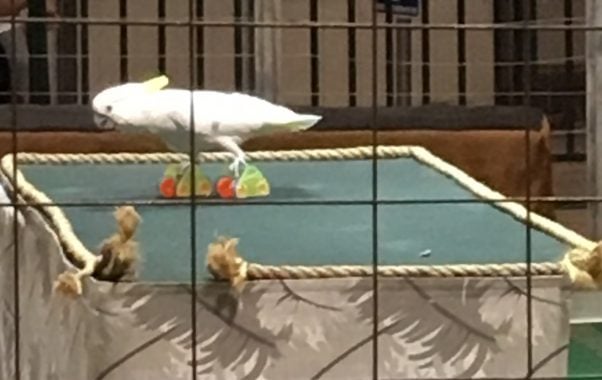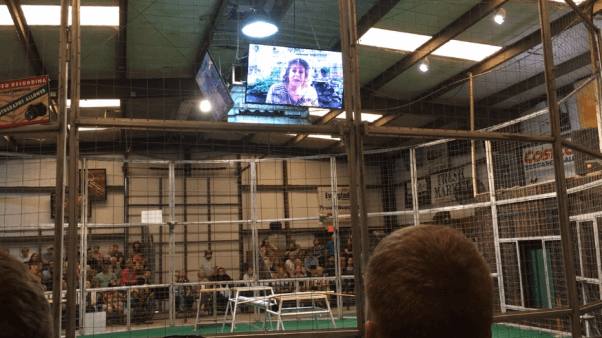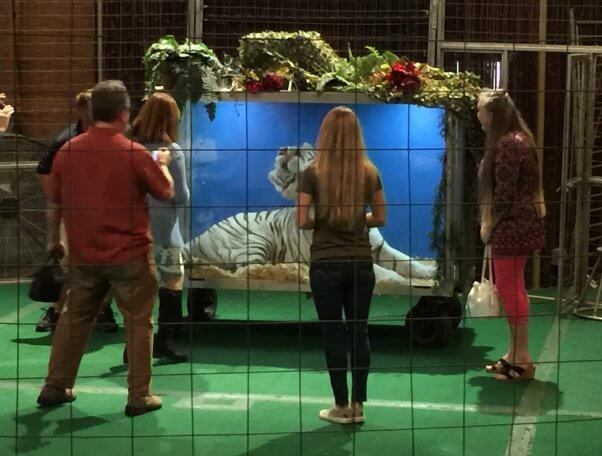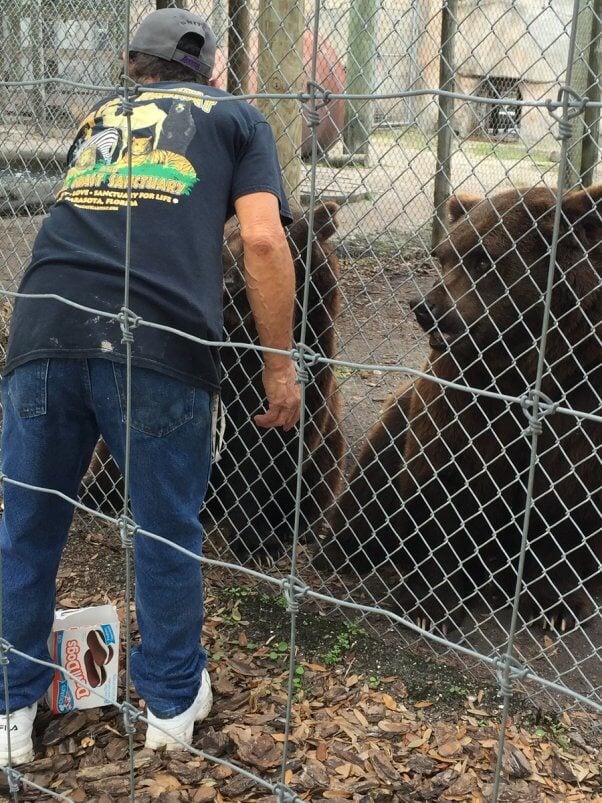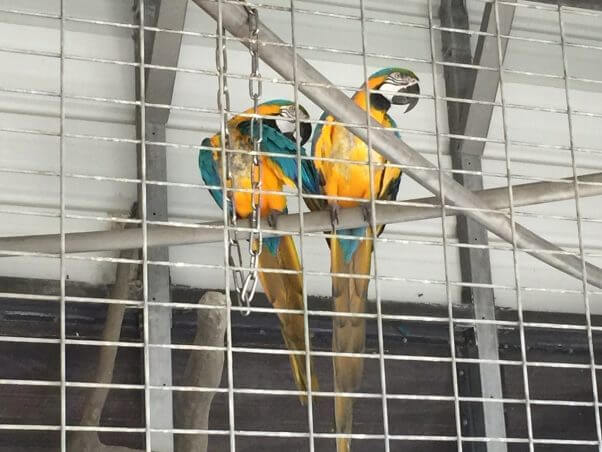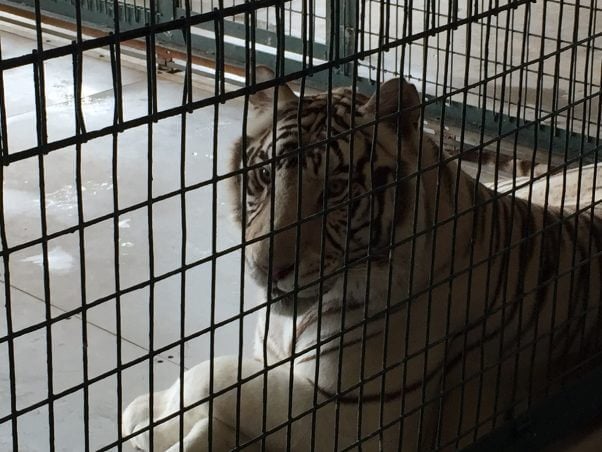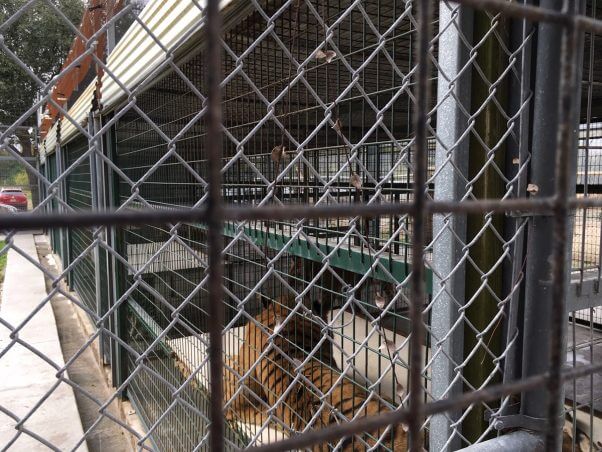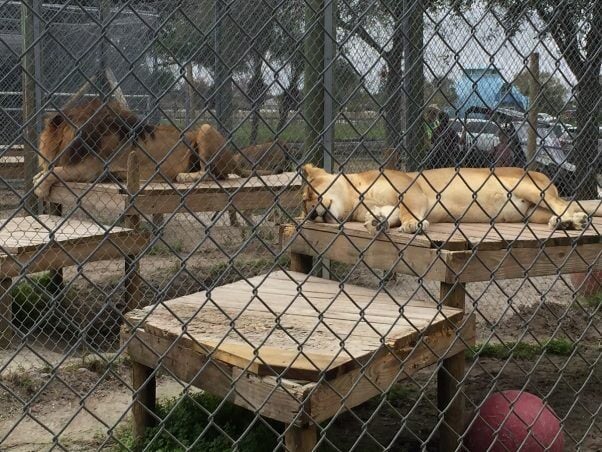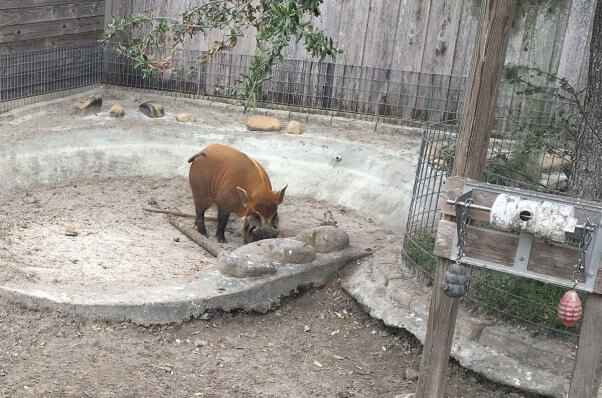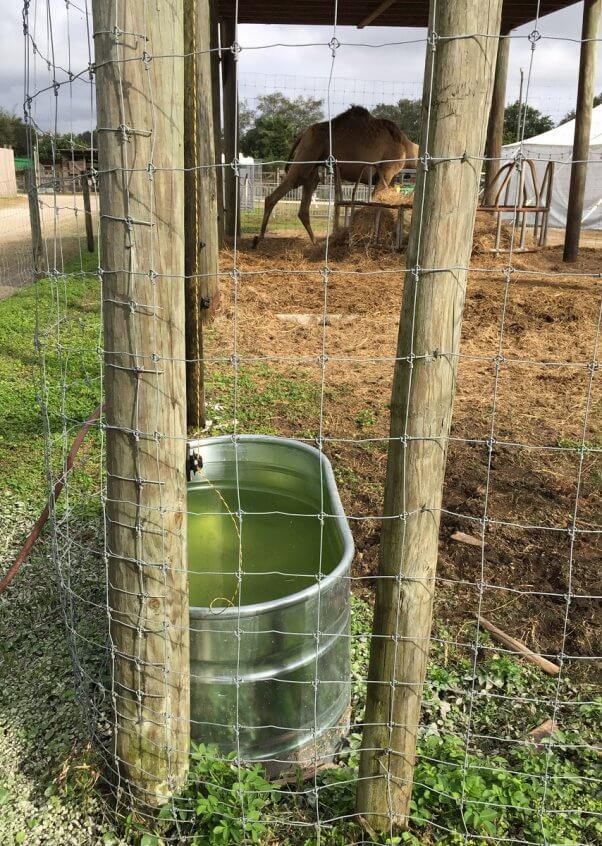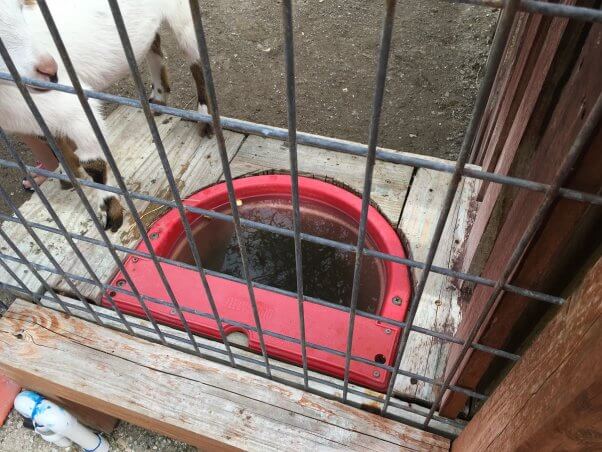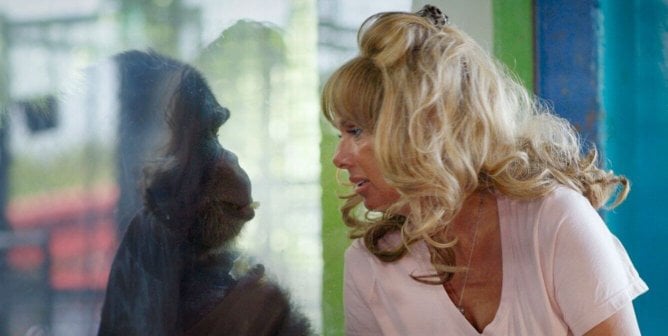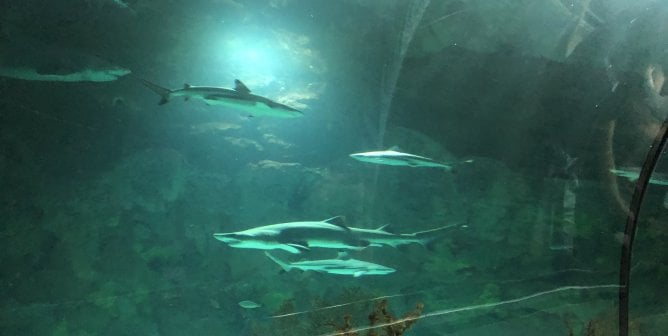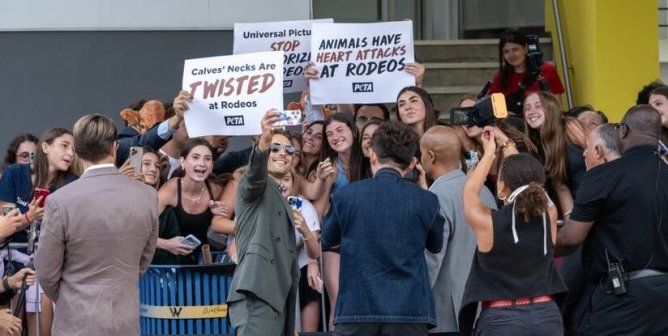Chimpanzee Yanked Around on Leash, Big Cats Made to Do Tricks With Whip
Big Cat Habitat and Gulf Coast “Sanctuary” in Sarasota, Florida, is a far cry from a true animal sanctuary. In 2019, a PETA eyewitness saw a chimpanzee jerked around by a leash wrapped around his neck, big cats forced to do tricks under the threat of a whip, camels with only putrid green water, and many animals confined to pitifully small cages while tourists gawked at them and shoved food on sticks through the chain-link fences.
This shabby roadside zoo is owned and operated by the Rosaire family, exhibitors notorious for using animals in abusive circus acts and for racking up piles of citations for violating the federal Animal Welfare Act. Two members of the family are still carting bears around the country for performances. There’s even a circus tent on the grounds of the roadside zoo in which visitors who pay for another ticket can watch more animals be forced to perform.
One of the saddest animals at Big Cat Habitat is a chimpanzee named Chance. Torn from his mother when he was just 6 months old, he was sold by a breeder in Missouri to be a “pet” for a private owner in North Carolina. Not long afterward, the Rosaires bought Chance and began training him to perform. They leased him out for use in The Wolf of Wall Street, and for years, they’ve been forcing him to perform tricks by yanking him around on a leash wrapped around his neck, as this video shows.
During Chance’s performance, PETA’s eyewitness heard Pam Rosaire yelling at him, “No! Do it again! Do it right!” She repeatedly jerked him backward by the leash, forcing him into a human-like standing posture. The chimpanzee responded by using his hands to pull back on the chain, which appeared to be choking him. Pam told the audience that he was doing a “bodybuilder pose” to show off for them. During the performance, Chance was forced to play basketball and do repeated flips and other demeaning tricks, all while tethered.
In the same show, Clayton Rosaire forced a white tiger and a liger (a lion/tiger hybrid) to do tricks, including jumping through hoops of red lights. He told the audience that the family trains big cats to jump through rings of fire by first forcing them through lighted hoops. Then the stunts get more dangerous and frightening. Clayton held a whip during the entire performance. While the audience never saw him whip the animals, it’s likely that they obeyed him because they knew what would happen later if they didn’t.
Another member of the Rosaire family forced exotic birds to perform tricks, including roller skating.
And a two-minute video of Kay Rosaire talking was played, in which she told the audience not to support animal rights organizations because circus exhibitors are the real animal advocates.
After the show, a tiger named Barry White was forced into a small, closed clear box that he had to sit in while visitors crowded around him for pictures. In 2017, a PETA eyewitness documented that he had large calluses on his front legs—likely as a result of living on concrete—and was sucking his own tail, a type of self-injurious behavior.
When the animals aren’t being forced to perform, they’re shut inside miserably small, nearly bare enclosures. Tourists bang on the fences, make strange noises and laugh at the animals, and put pieces of food on sticks to shove into their faces. Bears received hot dogs and snack cakes.
A capuchin monkey repeatedly raked a hard object across the bars of his cage, which is a sign of psychological distress.
Macaws suffered from feather loss on their chests, likely from self-injury in response to stress.
Big cats were confined to concrete enclosures with only periodic access to more natural ground and water to cool off in. When they were outdoors, they chewed on the wood platforms in their enclosures, which is often a sign of frustration and stress. If the wood was treated with chemicals to make it hold up outdoors, ingesting it could be unhealthy and dangerous for the animals.
A red river hog didn’t appear to be housed with any other species members for companionship.
Camels and goats had only putrid green water to drink.
The Rosaires frequently told visitors that they operate a “sanctuary” and repeatedly asked for donations. Clayton said that if people wondered why the animals’ enclosures weren’t larger, they could donate money to be used to build bigger habitats. However, Big Cat Habitat claimed $1,539,800 tax-free dollars in 2017, the last year for which records were available. That total doesn’t include the family’s other ventures, including operating the traveling circus and renting out animals.
Big Cat Habitat and Gulf Coast “Sanctuary” is hell on Earth for the animals who are trapped there and forced to perform demeaning tricks for snickering audiences under the threat of physical punishment. Please, don’t give your money to this or any other seedy roadside menagerie. And tell the Rosaires that they’ve exploited animals long enough—it’s time to retire them to real, reputable sanctuaries.

